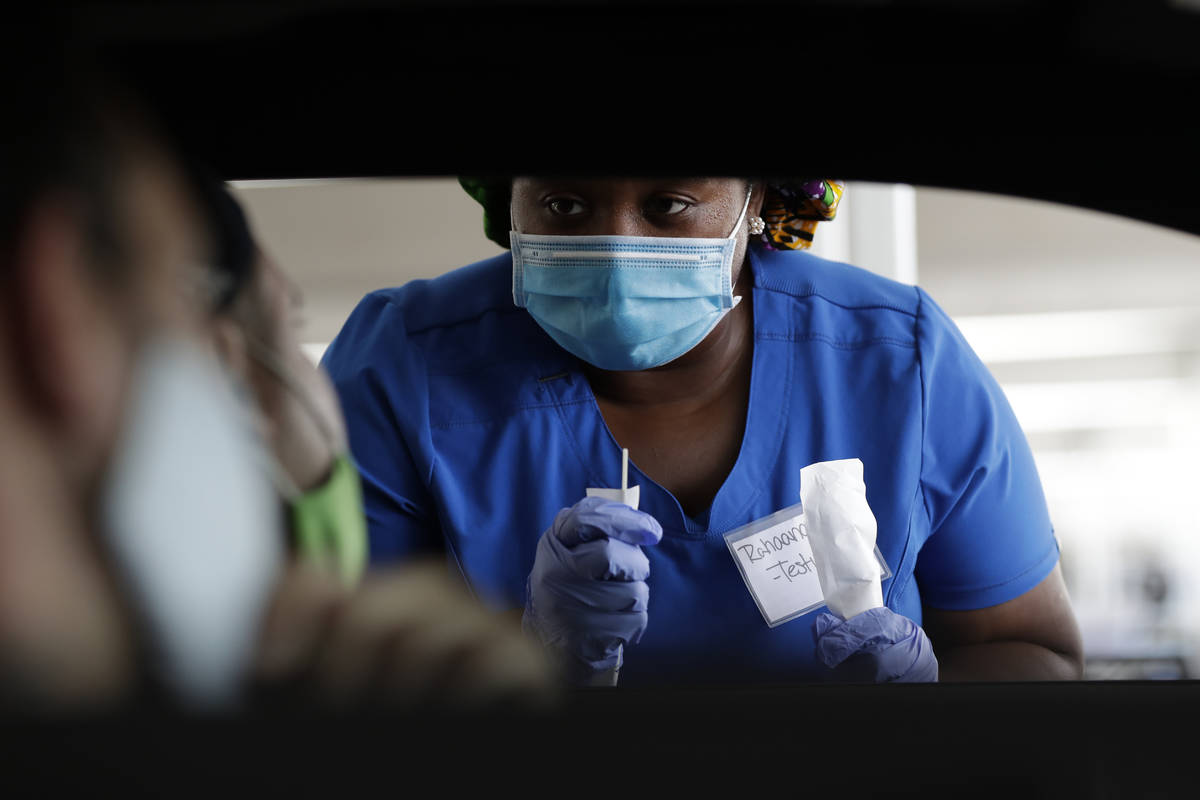CDC change on COVID-19 testing guidelines meets pushback in Nevada

A change to federal guidelines on coronavirus testing from the White House task force that run counter to what scientists say is necessary to control the pandemic sparked criticism, confusion and resistance, including from officials in Nevada.
The new guidance says it’s not necessary for people who don’t feel sick but have been in close contact with infected people to get tested. It was posted earlier this week on the website of the Centers for Disease Control and Prevention.
The CDC previously had advised local health departments to test people who have been within 6 feet of an infected person for more than 15 minutes. But on Monday a CDC testing overview page was changed to say that testing is no longer recommended for symptomless people who were in close contact situations.
There was a caveat. Testing may be recommended for those with health problems that make them more likely to suffer severe illness, or if their doctor or local state officials advise they get tested.
Across the country, public health experts called the change bizarre. They noted that testing contacts of infected people is a core element of public health efforts to keep outbreaks in check, and that a large percentage of infected people — the CDC has said as many as 40 percent — exhibit no symptoms.
“The recommendation not to test asymptomatic people who likely have been exposed is not in accord with the science,” said John Auerbach, president of Trust for America’s Health, a nonprofit that works to improve U.S. disease preparedness.
In Nevada, both the state’s top medical official and the Southern Nevada Health District issued statements saying they would not change their recommendation for widespread testing.
“We disagree with the change in CDC guidelines and will continue to strongly recommend and urge testing for all individuals — symptomatic or asymptomatic — who have been in close contact of persons with COVID-19,” said Dr. Ishan Azzam, Nevada’s chief medical officer. “… Testing will help provide Nevadans with more information about their own health conditions and will help slow the spread of COVID-19 in our communities.”
CDC officials referred all media questions to the U.S. Department of Health and Human Services in Washington, D.C. That suggests that HHS ordered the change, not the CDC, said Jennifer Nuzzo, a Johns Hopkins University public health researcher.
After Twitter lit up with head-scratching and alarm about the change, HHS officials sent an email Wednesday saying the guidance was revised “to reflect current evidence and the best public health interventions,” but did not detail what the new evidence was.
In a call with reporters, Dr. Brett Giroir, the HHS assistant secretary for health, said the guidance language came from the CDC. But he also said many people were involved in “lots of editing, lots of input.” He said federal officials achieved consensus but it was difficult to attribute the final language to any one source.
The Associated Press and Review-Journal staff writer Mike Brunker contributed to this report.